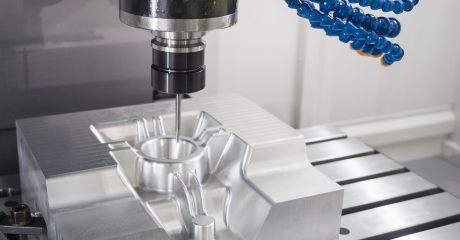When properly used CNC machines are long-lasting, productive, and safe. However, if a machine is misused or mishandled, opposite results will occur. The issues presented below are some of the most common mistakes made by operators and can cause big issues for the work environment.
Selecting the Wrong Cutting Tool
Most cutting tools on the market are available in right- and left-handed versions. Selecting the correct “handed” tool is crucial when performing a powerful machining operation. If you run the wrong “hand” of tooling versions, the force of the cutting operation can pull the way system apart. The only support will come from the strength and integrity of the components compromising the way system. Over time the system will degrade and possible problems such as sizing issues, chatter, and degraded surface finishes can occur.
Positioning Errors
Positioning errors mainly include misalignment and sub-manufacturing inaccuracy errors–both of which go hand in hand. When machining a workpiece on a machine tool, several geometric elements on the workpiece are selected as a positioning reference. If the selected positioning reference and design basis do not coincide, it will produce a misalignment error.
Together, the workpiece surface and the fixture positioning component form what is known as a positioning pair. Due to the original inaccurate positioning of the positioning pair, a gap is formed between the pieces. This gap causes the positioning sub-manufacturing inaccuracy error to be called.
Mishandling Bar Applications
Bar operations involve machining a part, cutting it off, feeding the bar and then running the next part. Most of the time, companies use inexpensive bar pullers–which are held in one of the tool stations–to minimize costs. With bar pullers, the only support for the bar is the spindle itself. When it comes to pricier bar feeders, the bar is fully enclosed and supported within the device. Most bar-pulling applications work better if the bar isn’t long enough so that it exits the rear of the spindle. If it does just the slightest, the rotational stress will bend the overhang and in some cases mangle the spindle and its motor.
Ignoring M Codes
Most M codes are like programable on/off switches (i.e. spindle on/off, coolant on/off, door open/close etc.) Without the proper understanding of every M code, a programmer might unknowingly cause an issue with the machine which could affect its longevity. For example: Rotary axes incorporate clamping systems that secure the axis in placing during powerful machining operations. Now, if the programmer is unaware of the “clamping” M code, the clamp will not engage, and undue stress will be placed on the machine’s rotary axis.
Poor Maintenance of Machines
Newer models of machines with multiple moving mechanical parts need regular cleaning and maintenance to keep them running smoothly. Failure to clear away dirt and debris over long periods of time can result in product inaccuracies and machine failures. To prevent such events, it’s crucial for operators to follow a detailed maintenance regime and to regularly check machine levels.
Inappropriately Manipulating Functions
A lot of work goes into every CNC application and while there is a little room for flexibility, operators must always keep to the guidelines they are given. However, there is the occasional operator that manipulates functions they should not. For instance: operators increasing/decreasing feed rate and spindle speed override functions. While there are appropriate times and reasons to use these functions, some operators may just use them to make parts faster. Alternately, they could be used to slow production to keep them from having to work to hard.
Contact Us
No matter the challenge, Custom Tool & Grinding ensures you get the best and are working with the best. We provide quality and experience to help you secure the services and products you need. Contact us to learn more about how we can help you.
